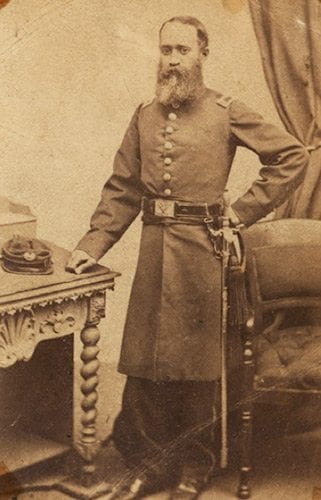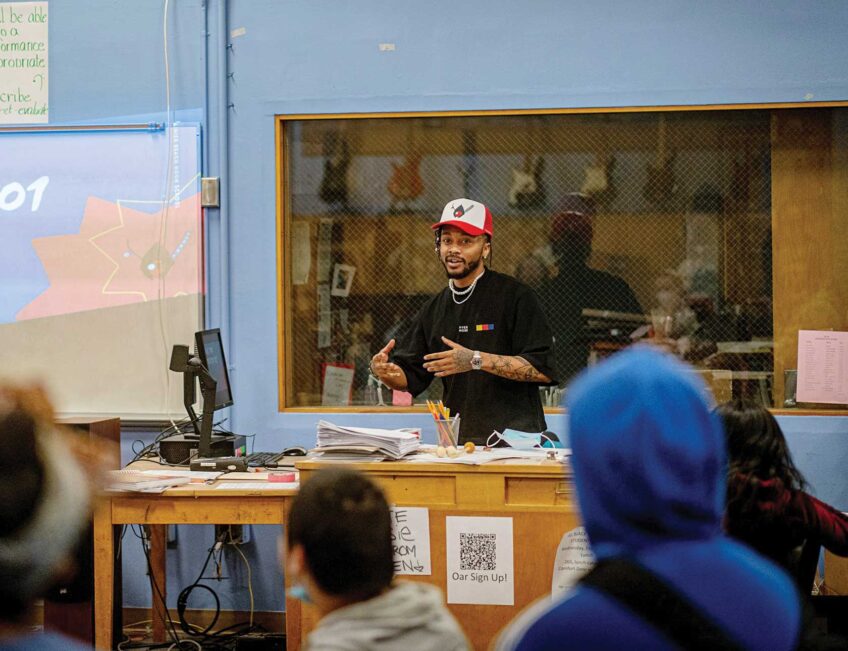
African American surgeon Dr. John Van Surly DeGrasse, between the years 1850 and 1860, was regarded as the most cultured and accomplished black in the world, according to historian William Henry Ferris.
The son of Count George DeGrasse and Marie M. Van Surly DeGrasse, he was born in June 1825 in New York City, where he attended private and public schools.
In 1840, DeGrasse studied for one year at the Oneida Institute, a Presbyterian school in Whitesboro, New York, founded in 1833 by abolitionist Beriah Green. The institute emphasized manual training and academic education and favored Greek and Hebrew Scriptures over Latin Classics. Since Latin was not taught there, DeGrasse departed for the Clinton Seminary, where he remained two years.
In the fall of 1843, DeGrasse had planned to attend college in the United States, but a friend persuaded him to spend two years taking courses in medicine at Aubuk College in Paris. He returned to New York in November 1845 and, for two years, studied medicine with Dr. Samuel R. Childs. He then traveled to the coastal Maine town of Brunswick, where he attended the Medical School of Maine at Bowdoin College. On May 19, 1849, DeGrasse acquired his medical degree with honors, becoming the second African American to graduate from a U.S. medical school.
In the fall of the same year, the doctor went back to Europe, traveling to England, Italy, Switzerland and Paris. While in Paris, he served as an assistant to the renowned French surgeon Alfred Armand Velpeau. Ferris noted that DeGrasse was an eminent black physician — “a polished and refined gentleman, whose culture had been ripened by studies in France and travels in Europe.”
DeGrasse returned home to the United States aboard the ship “Samuel Fox” and initially set up his medical practice in New York. He soon moved to Boston and, on August 5, 1852, married Cordelia Lucretia Howard. One child, Georgiana Cordelia DeGrasse, was born of the marriage on December 5, 1855. By July 1853, DeGrasse had established a medical practice at 40 Poplar St. in Boston. He advertised it in William Lloyd Garrison’s paper, the “Liberator.”
About DeGrasse, abolitionist and historian William Cooper Nell on January 24, 1854, wrote, “Dr. John V. DeGrasse . . . skillful and faithful in his practice, though laboring under the obstacles that beset all young physicians, will soon, it is hoped, realize a reward for the labor and cost, which, in the Parisian hospitals and elsewhere, have qualified him for administering to the various ills that human flesh is heir to.”
Seven months later, on August 24, 1854, having earned a favorable reputation by his skill and persistent effort, DeGrasse gained admission to the Massachusetts Medical Society, becoming the first African American to do so in the state. The following month, the “Boston Investigator” reported that it was probably the first time that such an honor was conferred on black man in the United States.
Commenting favorably upon his induction, another newspaper remarked that many of the city’s most respected physicians consulted DeGrasse whenever medical advice was needed, and that the “Boston medical profession, it must be acknowledged, has done itself honor in thus discarding the law of caste, and generally acknowledging real merit, without regard to the hue of the skin.”
In August 1855, DeGrasse served as a surgeon in the Massasoit Guard — a black militia unit, formed in 1852 under the leadership of attorney Robert Morris, John P. Coburn and others. The company numbered about 80 men. Although Morris petitioned the Commonwealth of Massachusetts for recognition, the state did not recognize black militia units at that time.
A Mason of the Prince Hall Grand Lodge in Boston, DeGrasse served as Grand Senior Warden from 1860 to 1861 and became Most Worshipful Grand Master in 1862. On September 18, 1862 at the Twelfth Baptist Church on Southac Street, on behalf of the Grand Lodge he delivered an address accepting the invaluable gift of a portrait of John T. Hilton, painted by artist William H. Simpson.
Paying homage to his Masonic brother Hilton, DeGrasse said in part, “To us, this portrait is invaluable, not only to remind us of the man whom we all esteem, and with whose life and character we are conversant, but to the young men who may have the good fortune to enter our sanctum sanctorum in after years, this picture can be pointed out, and we can tell them how faithful our friend and brother, John T. Hilton, was to the order for more than 40 years, and urge upon them the ardor, zeal and constancy that characterized him, not only for what would benefit the craft, but the community at large.”
On April 23, 1861, DeGrasse and other black men, including Robert Morris, Dr. John S. Rock, Mark R. De Mortie, William Cooper Nell, and future state representative John J. Smith, met at the Twelfth Baptist Church to express their sentiments regarding the Civil War. At that time, they passed a resolution declaring that they were ready to raise an army of 50,000 black men to defend the United States and its flag, provided the laws could be altered to allow those men to enlist. It was also resolved that they immediately form companies for drill.
Justifying the use of black soldiers as a war necessity, President Abraham Lincoln signed into law the Militia Act of July 17, 1862. Among other things, the act authorized the President “to receive into the service of the United States,” for the purpose of performing “any military or naval service for which they may be found competent, persons of African descent.”
Once black men were permitted to enlist in the military, Massachusetts governor John A. Andrew, another Bowdoin College graduate, commissioned DeGrasse as an assistant surgeon in the Union Army. He was mustered in on May 18, 1863 and temporarily assigned to Camp Meigs in Readville, Mass.— a training camp for Union soldiers of the famed 54th Massachusetts Infantry. On January 1, 1864, DeGrasse was commissioned as an officer, under the command of abolitionist Edward Wild of Brookline, in Company S of the U.S. Colored Troops 35th Infantry Regiment — formerly known as the 1st Regiment, North Carolina Colored Volunteers. He was one of only eight African American surgeons to serve in the Union forces and the only one to serve in the field with his regiment.
While serving in Florida, however, DeGrasse was charged with “drunkenness on duty” and “conduct unbecoming an officer.” It is suspected that the charges were trumped up and racially motivated, as there was testimony suggesting that the allegations were baseless and a clear record of concerted hostility by white officers towards black officers, particularly black surgeons. Nonetheless, an all-white jury convicted DeGrasse, and he was mustered out of the Union Army on November 1, 1864. For his brief service with the 35th in Beaufort, South Carolina, and Jacksonville, Florida, Governor Andrew awarded him a gold-hilted sword from the Commonwealth of Massachusetts.
Dr. John V. DeGrasse died in Boston of tuberculosis on November 25, 1868, at the age of 42. The “Lowell Daily Citizen and News” reported that he was “respected by all who knew him.” He is buried at the Cypress Hill Cemetery in Brooklyn, New York.






